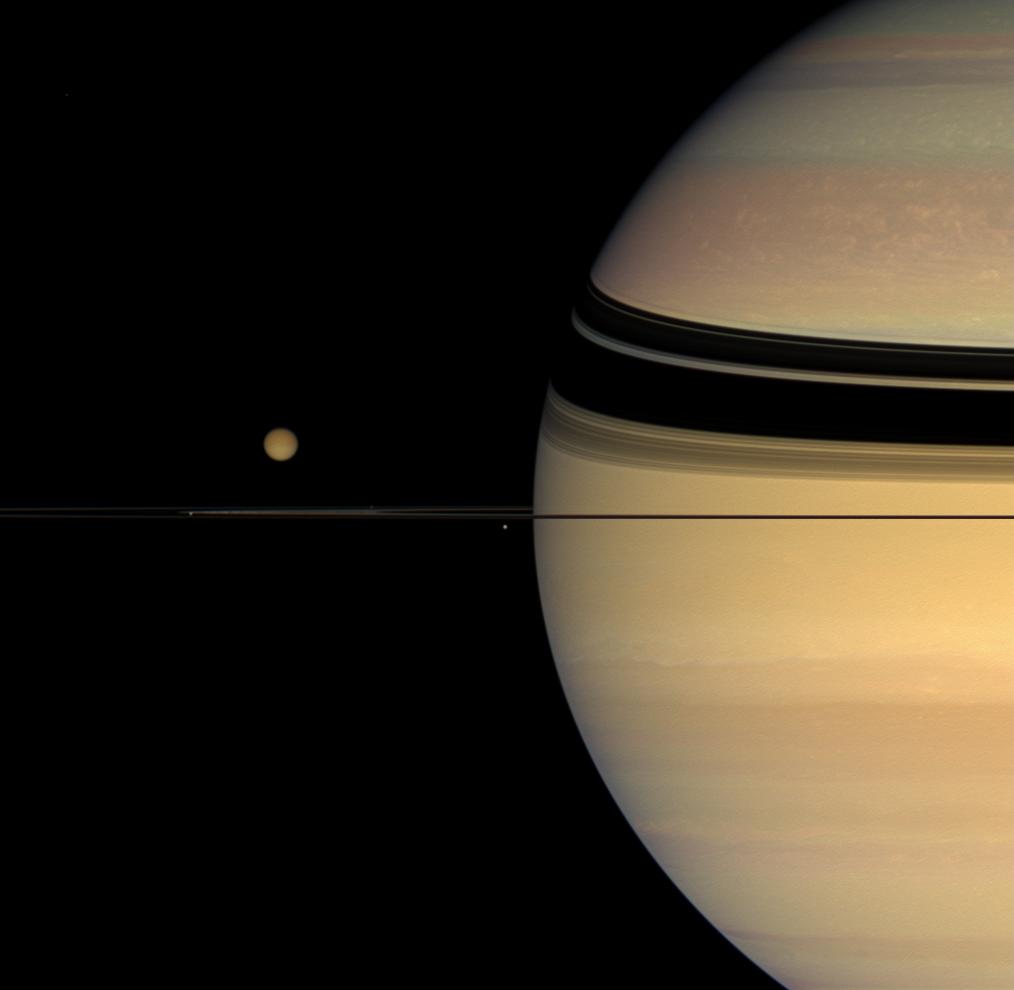Many Colors, Many Moons

| Credit | NASA/JPL/Space Science Institute |
|---|---|
| PIA Number | PIA10487 |
| Language |
|
Four moons huddle near Saturn's multi-hued disk.
The coloration of the planet's northern hemisphere has changed noticeably since the Cassini spacecraft's arrival in orbit in mid-2004. Imaging scientists are working to understand the causes of this change, which is suspected to be a seasonal effect.
Giant Titan (5,150 kilometers, or 3,200 miles across), with its darker winter hemisphere, dominates the smaller moons in the scene. Beneath and left of Titan is Janus (181 kilometers, or 113 miles across). Mimas (397 kilometers, or 247 miles across) appears as a bright dot close to the planet and beneath the rings. Prometheus (102 kilometers, or 63 miles across) is a faint speck hugging the rings between the two small moons.
This view looks toward the unilluminated side of the rings from less than a degree above the ringplane.
Images taken using red, green and blue spectral filters were combined to create this natural color view. The view was acquired with the Cassini spacecraft wide-angle camera on Oct. 26, 2007, at a distance of approximately 1.5 million kilometers (920,000 miles) from Saturn and 2.7 million kilometers (1.7 million miles) from Titan. Image scale is 89 kilometers (55 miles) per pixel on Saturn and 164 kilometers (102 miles) per pixel on Titan.
The Cassini-Huygens mission is a cooperative project of NASA, the European Space Agency and the Italian Space Agency. The Jet Propulsion Laboratory, a division of the California Institute of Technology in Pasadena, manages the mission for NASA's Science Mission Directorate, Washington, D.C. The Cassini orbiter and its two onboard cameras were designed, developed and assembled at JPL. The imaging operations center is based at the Space Science Institute in Boulder, Colo.
